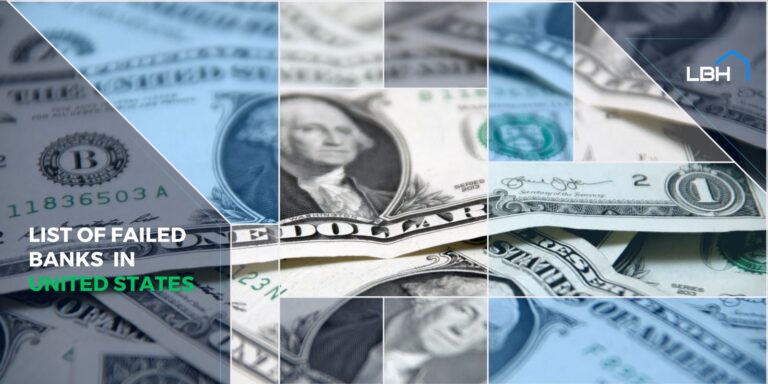Today’s real estate landscape offers many avenues for investors and homebuyers to land a lucrative deal. One of the options available is to buy real estate owned (REO) properties.
These properties can serve as a valuable addition to an investor’s portfolio or a cost-effective way to own a home. However, they also have their disadvantages, which are worth considering before making a decision.
This guide will provide an overview of REO listings, their advantages and disadvantages, and how to find them. It will also discuss the process of purchasing an REO property, including financing and inspection tips.
REO Property Meaning
The term real estate owned (REO) describes a class of property that a lender owns following an unsuccessful foreclosure auction. The lender can be a bank, a government agency, or a loan insurer. real estate owned properties are different from conventional properties in that they are sold as is, often below market value.
How Do REO Listings Come About?
It is common to use loans to finance real estate purchases. If the loan is not paid on time or the buyer defaults on the mortgage, the lender takes ownership of the property and offers it for sale. This process is known as foreclosure. The lender sells the property as a foreclosure sale or at a foreclosure auction to recoup the unpaid loan.
However, the lender may not receive enough money from the auction to recoup their losses. These losses include the outstanding loan balance, fees associated with the legal process, and other foreclosure costs. The remaining debt is known as a deficiency judgment.
The lender usually sets a minimum bid at the auction to avoid a deficiency judgment. If no one bids at or above the minimum bid, the lender takes back possession of the property. Then, it becomes a real estate-owned property.
There are several reasons why a property may fail to attract desirable bids at a public auction. First, the home may be in poor condition. It may also be underwater, meaning its value is below the amount owed.
Banks are not in the business of property management. As a result, they offer REO listings at discounted prices.
Real estate owned (REO) listings offer a unique opportunity for home buyers willing to put extra work into the property. In return, the buyer gets a property at a lower price than the market value. The result is increased profits if they decide to sell it after improvements.
However, these properties also have their fair share of downsides. It is essential to understand them before making a purchase.
REO Advantages
Real estate-owned property ownership can offer many benefits, making it an appealing option for many investors. The following are some of them:
Low Prices
One of the major advantages of real estate-owned properties is the low price. Lenders often sell REO property at a reduced price compared to their market value as they are eager to recoup their losses.
Sold Lien-Free
REO listings are typically sold lien-free, meaning they come without unresolved debts or encumbrances. It eliminates the risk of inheriting any unexpected liabilities attached to the property.
Motivated Sellers
The lenders or sellers are generally more motivated compared to regular sellers. They have an urgency to clear their books of these non-performing assets. For that reason, they are likely to have more flexibility during negotiations.
Good for Flipping
Real estate owned properties also present an opportunity for renovation and flipping. With the right improvements and updates, these properties can be sold for a significant profit.
Tax Benefits
You might be able to claim tax benefits such as depreciation or a tax credit for making energy-efficient improvements. However, this will depend on your local tax laws. It’s essential to consult a tax professional to understand the specifics of these benefits.
REO Disadvantages
Real estate-owned properties also have disadvantages, which you should consider before investing. These include the following:
Need for Repairs
REO listings are usually sold as is. It’s the buyer’s responsibility to take care of repairs and renovations. This can add a considerable amount to the initial investment, especially if they require extensive repairs.
Lack of Seller Cooperation
Lenders are in a hurry to sell. They are less likely to offer good customer service as they don’t intend to sell REO properties for profit. Therefore, they may not give you a full history of issues or pending repairs. They are also often unwilling to assist with pre-sale repairs.
Financing Problems
While financing options are available for REO property, they can be more restrictive than traditional home purchases. These properties are often considered high risk, especially if they require significant repairs. This can make it challenging to secure a loan or result in higher interest rates. However, there are many non traditional lenders providing financing for REO property.
Additional Costs
While REO listings are often sold at a lower price, they may come with additional costs. The seller may meet some of these costs in a traditional house purchase. This is not the case with REO properties. The additional costs may include repairs and renovations, unpaid taxes, closing costs, and owner’s title policy.
Additional Expenses for Association-Owned Foreclosures
REO properties that belonged to an association, particularly condos, sometimes come with outstanding debts. These include back and special assessments that the previous owners could not pay. As the new owner, these arrears may become your responsibility. Additionally, other fees may accrue during the bank’s ownership. These, too, might fall upon you.
How to Find Real Estate Owned Properties for Sale
Finding REO properties for sale requires a bit of research and legwork. Here are some methods to help you.
Scour the Internet
This is the most traditional method of finding REO properties for sale. It is also the easiest. There are many public sources dedicated to helping potential buyers find REO listings. These include the following:
Local Multiple Listing Service (MLS)
Most mortgage lenders team up with real estate agents to list their foreclosed homes. These homes are listed on a public platform called MLS.
The MLS is a comprehensive database of properties for sale in an area. It includes REO property, among other types. You will need a real estate agent to access the MLS. A real estate agent can also inform you about REO properties before listing.
Public Records
When a house is foreclosed, a notice goes to the county clerk who maintains public records. You can search for legal notices such as “Notice of Sale” or “Notice of Default” to improve your chances of success. Another benefit of this method is that it is free.
Bank owned property
Major banks maintain a list of bank owned property available for sale on their websites. Bank owned property listings are updated regularly and can provide details about the property, including location, size, price, and photos.
These banks include Wells Fargo, U.S. Bank, Bank of America, and Chase. It’s worth mentioning that not all banks sell bank owned property to individual buyers.
Government Foreclosures
Government agencies can foreclose on a property. These include institutions such as the United States Department of Housing and Urban Development, Fannie Mae, and the Small Business Administration. You can check their websites for their REO property listings.
Online REO Directories
You can also use other websites like Zillow and RealtyTrac. They have special sections for foreclosed and REO homes. You can also contact an REO property listing agent.
Contact Lenders Directly
Some lenders don’t list foreclosed homes on their websites. You can contact their REO or asset management departments to enquire. You can also talk to other real estate professionals. They include asset managers, title agents, mortgage brokers, and contractors.
Go Where the Foreclosures Are
If you’re ready to take a hands-on approach, consider areas with high foreclosure rates. These locations usually provide a larger pool of opportunities to find real estate owned or bank owned property.
Illinois, Maryland, New Jersey, South Carolina, and Delaware are the top five states with the highest foreclosure rates in 2023. If you want a more localized approach, consider the following cities:
- Atlantic City, New Jersey
- Cleveland, Ohio
- Lakeland, Florida
- Columbia, South Carolina
- Chicago, Illinois
Visiting these places will give you a more accurate picture of the REO market. You may also come across REOs that haven’t been listed yet.
Before buying a foreclosed home, do your due diligence. Inspect the property correctly. Also, assess repair costs as it will help you evaluate the potential return on investment.
How to Finance an REO Purchase
You can finance an REO property the same way you would a conventional home purchase — with a loan program. The following loan programs are available to help you finance an REO purchase:
Conventional Mortgages
Conventional mortgages are neither insured nor guaranteed by the federal government. You’ll need a good credit score and a stable income to qualify. Lenders often require a down payment of about 20% of the home’s value. However, the downpayment can be less with mortgage insurance. Freddie Mac is an example of a mortgage lender for lender owned property. Others include Fannie Mae and banks.
Federal Housing Administration Loans
An alternative to conventional mortgages is FHA loans. The Federal Housing Administration backs and insures these loans.
FHA loans are perfect for home buyers with low credit scores and limited funds for the down payment. They require a down payment of as low as 3.5%. They also have less stringent requirements compared to conventional mortgages.
However, purchasing REOs with FHA loans can be challenging due to the FHA’s 90-day flip rule. Under this rule, FHA loans can only finance properties owned by the seller for more than 90 days. Given the fast-moving nature of the foreclosure market, this rule renders FHA loans less useful for REO purchases.
Home Equity Loans
A home equity loan allows you to borrow against the equity you’ve built up in your primary residence. It can be a good choice if you’ve owned your current home for a while and have built substantial equity.
Renovation Loans
A renovation loan wraps your mortgage and renovation costs into one loan. You will need a good credit score to get this loan. It may also come with some clauses.
Cash
The cash option provides a substantial advantage in a competitive market. The reason is that sellers usually prefer cash transactions as they offer speed. Cash also provides certainty.
Hard Money Loans
A hard money loan is usually the last option. It gives you fast cash to buy a home that needs a lot of renovations. These loans come at a higher rate and shorter repayment terms. They also have big down payments.
What to Look for During an REO Home Inspection
Real estate-owned properties are sold as is. If you discover problems after closing, you are responsible for the repairs. For that reason and for the purpose of owner’s title policy, it is essential to inspect an REO property thoroughly before you buy. Here are some key elements to inspect:
Structural Integrity
Check the property’s structural integrity, including the wall, roof, and flooring. Signs of major problems include:
- Noticeable leaning of the property
- Large cracks in the walls
- Sagging or uneven floors
- Missing or loose roof tiles
Electrical and Plumbing Systems
Look out for dated wiring, dysfunctional outlets, and inadequate electrical service. These may be expensive to correct. Also, check for signs of leaks and clogged sinks.
HVAC Systems
Check the heating, cooling, and air conditioning system. A faulty HVAC system can cost you a lot in repairs. Replacement is also expensive.
Mold or Pest Infestations
Looking for signs of mold or pest infestations is also critical. Some of the things to watch out for are signs of rodents, musty odors, or discoloration.
Grounds
Inspect the landscaping, walkways, and driveways for disrepair. Check for poor drainage or other issues leading to costly landscaping work. You should also evaluate outdoor structures like sheds, garages, or decks.
Other items you should check include the windows, doors, and any appliances that may come with the property. If possible, hire a professional home inspector to provide an expert assessment.
Tips for Renovating and Flipping REO Properties
When it comes to renovating and flipping an REO property, there are a few key strategies that can make the process more successful. They include:
Budget Wisely
Be realistic about your renovation costs, always accounting for unexpected expenses. Ideally, your total cost, purchase price plus renovations, should not exceed 70% of the property’s after-repair value.
Prioritize Essential Repairs
With an REO property, you will likely have many repairs to make. Focus on the ones that affect the home’s value and its livability. This means plumbing, electrical, and structural repairs come first.
Hire REO Specialists
Some tasks are best left to professionals. This is particularly true for specialized work like electrical wiring, plumbing, and roofing. Hiring professionals ensures quality work.
Consult a Real Estate Agent for Other Value-Adding Features
Other features can increase the property’s value. These include energy-efficient upgrades, a modern kitchen, smart home technology, and an open floor plan.
Outdoor improvements such as landscaping, a new deck, or a fresh coat of paint can also increase its value.
Related Articles: Preforeclosure: What It Is and How It Works
The Bottom Line
REO properties are a good option for investors and individuals looking to buy a property at a lower price. However, there are many risks involved. It’s essential to weigh its disadvantages against the benefits.
Research and due diligence are crucial when you are in the market for an REO property. It is best to work with an experienced real estate professional who can help you make an informed decision on whether or not this investment opportunity is right for you.













